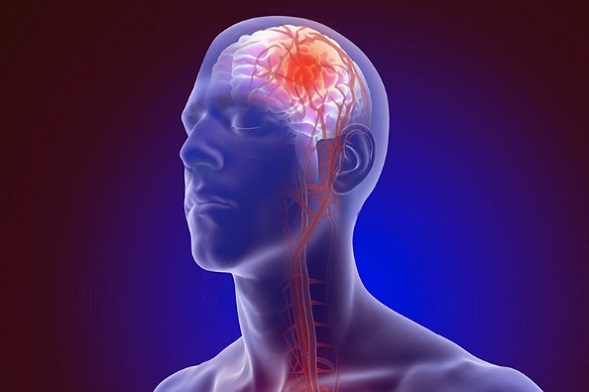Nikhil Prasad Fact checked by:Thailand Medical News Team Jul 14, 2025 5 months, 1 week, 3 days, 10 hours, 8 minutes ago
Medical News: E3 Ubiquitin Ligases Emerge as Crucial Players in Stroke Damage and Brain Recovery
A group of researchers from the Department of Neurology and the Department of Neurosurgery at Union Hospital, Tongji Medical College, Huazhong University of Science and Technology in Wuhan, China, have uncovered surprising roles played by E3 ubiquitin ligases in brain damage caused by stroke, particularly during the critical ischemia–reperfusion phase. This
Medical News report explores how these enzymes may both harm and heal the brain after a stroke and what this means for future therapies.
 E3 Ubiquitin Ligases Could Hold the Key to Stroke Recovery
E3 Ubiquitin Ligases Could Hold the Key to Stroke Recovery
Ischemic strokes occur when blood supply to parts of the brain is blocked. Doctors often use clot-busting treatments to restore blood flow quickly, but this sudden return of blood can ironically cause further brain injury through inflammation, oxidative stress, and cell death—a condition called cerebral ischemia–reperfusion injury (CIRI). Recent scientific evidence now points to the body’s protein recycling system, known as the ubiquitin–proteasome system (UPS), as a major player in this process. More specifically, E3 ubiquitin ligases—enzymes that tag damaged proteins for destruction—are showing up as important regulators in both brain injury and repair.
How These Enzymes Work
E3 ligases act like quality inspectors, tagging damaged or unneeded proteins so they can be recycled or destroyed. There are three main families of E3 ligases: RING, HECT, and RBR. These enzymes are not only vital for keeping the brain's protein environment in check but are also deeply involved in processes like inflammation, cell death, and mitophagy—a form of cellular cleanup that targets damaged mitochondria. Some ligases, like FBXO3 and RNF121, worsen brain damage by promoting harmful inflammation, while others like Parkin and RNF8 help protect brain cells by encouraging cellular repair and cleaning.
Inflammation and Recovery
One of the most damaging consequences of stroke is the wave of inflammation that follows. E3 ligases influence this by controlling the NF-κB pathway—a major driver of inflammation. Ligases such as RNF114 and TRIM9 suppress this pathway and reduce inflammatory damage, while others like RNF152 and TRIM47 ramp it up, worsening injury. Intriguingly, knockout or inhibition of some TRIM family ligases in animal models significantly reduced brain swelling and improved recovery outcomes.
Cleaning Mitochondria and Saving Neurons
Mitophagy, the removal of damaged mitochondria, is another area where E3 ligases shine. For instance, Parkin (from the RBR family) helps cells survive by cleaning out dysfunctional mitochondria after a stroke. This protects neurons from dying. Researchers also found that boosting certain ligases like PRKN can decrease brain infarct volume and improve motor function in mice.
More Than One Way to Kill a Cell
Th
e study also found that E3 ligases regulate various forms of cell death, such as apoptosis (programmed cell death), necroptosis (a form of inflammatory cell death), and ferroptosis (iron-related cell death). Different ligases either suppress or trigger these death pathways. For example, the CHIP ligase was shown to block necroptosis by degrading harmful proteins, while NEDD4 reduced ferroptosis by helping maintain iron balance in cells.
Final Thoughts
The researchers concluded that understanding how E3 ligases function in stroke damage opens new doors to potential treatments. By either blocking or enhancing specific E3 ligases, it may be possible to reduce inflammation, prevent brain cell death, and improve recovery after stroke. However, translating these insights into human therapies will require more studies, especially in real patients. The dynamic role of these ligases across different stages of stroke also presents both an opportunity and a challenge for medical science.
The study findings were published in the peer reviewed International Journal of Molecular Sciences.
https://www.mdpi.com/1422-0067/26/14/6723
For the latest on stroke prevention or treatment, keep on logging to Thailand
Medical News.
Read Also:
https://www.thailandmedical.news/news/many-are-unaware-that-influenza-infections-also-increase-the-risk-of-stroke-just-like-covid-19
https://www.thailandmedical.news/news/amino-acids-in-brain-fluid-linked-to-higher-stroke-risk-and-recovery-outcomes
https://www.thailandmedical.news/news/breaking-news-latest-study-covering-23-million-patients-shows-that-post-covid-individuals-have-a-63-7-percent-risk-of-developing-ischemic-stroke
